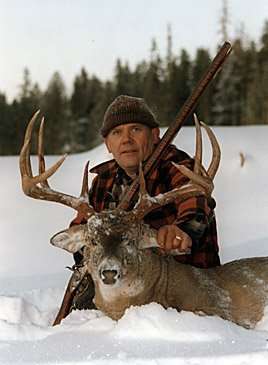12000
Est. Whitetail Population
62000
No. Licenses Sold Annually
$54
This fee includes $29.50 for hunting license and $24.50 for deer tag.
Resident hunting license and deer permit
$516
This fee includes $140.50 for hunting license and $375.50 for deer tag.
Non-resident hunting license and deer permit
178 2/8"
Taken by Sterling Shaver in Wallowa County in 1982.
Record B&C Typical Stat
6
Total B&C Typical Entries
189"
Taken by Nancy Garrett in Grant County in 2007.
Record B&C Non-Typical Stat
1
Record B&C Non-Typical Entries
 Season Dates (2013): Although dates vary by region, archery season runs from Aug. 25 to Sept. 23; muzzleloader season runs from mid-October to mid-November and rifle runs from Sept. 29 to Oct. 10.
Season Dates (2013): Although dates vary by region, archery season runs from Aug. 25 to Sept. 23; muzzleloader season runs from mid-October to mid-November and rifle runs from Sept. 29 to Oct. 10.
The Grade: D
Similar to its neighbor to the north, Oregon is primarily a mule and black-tailed deer destination. The main whitetail distribution trickles in from Washington and Idaho in the northeast corner of the state and is particularly found in Union, Wallowa and Umatilla counties. Although whitetail populations are relatively low and trophy-class potential is slim, Oregon does offer numerous public-land opportunities in the northeast region of the state that hunters take advantage of every season.
Antler Nation Knowledge: Unique to Oregon is the Columbian whitetail subspecies, and today Oregon offers the only huntable population in the U.S. These smaller-bodied deer once roamed throughout the Northwest but now only isolated pockets exist in the Umpqua Basin near Roseburg and along the lower Columbia River. In 1967 they were first recognized as endangered and were listed under the state and federal Endangered Species Acts shortly thereafter. After nearly 30 years of strict management, they were removed from the list in the Oregon area and today a small huntable population exists in the Roseburg area. Although tags are extremely limited (only six will be offered in 2012), it's great to see successful conservation efforts at work. As management and transplanting efforts continue, the goal is to increase opportunities in the future throughout the Beaver State.







